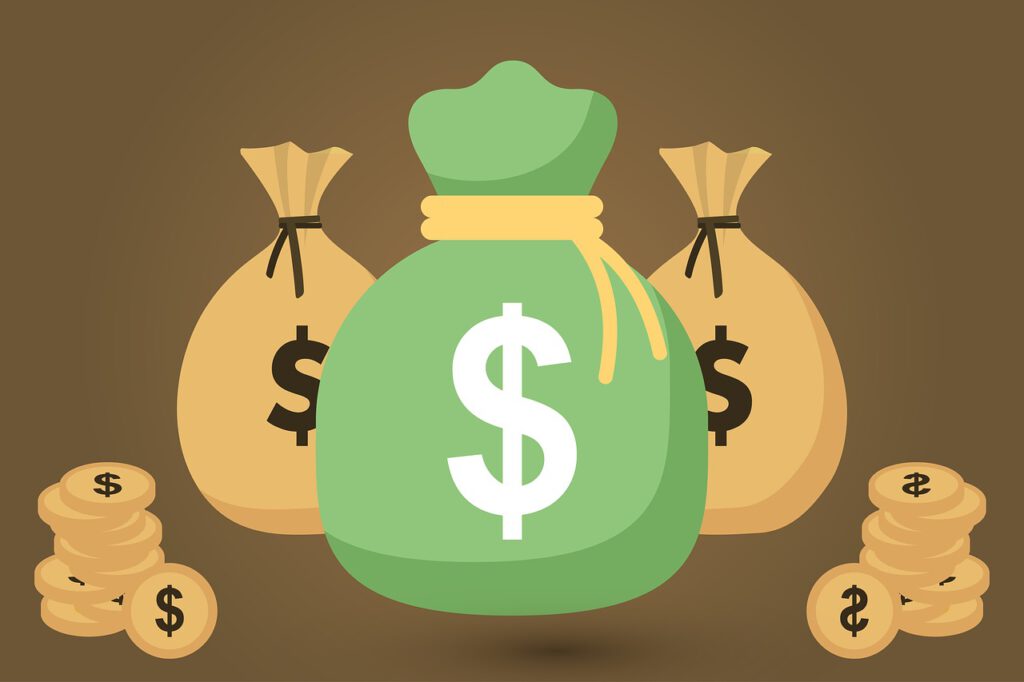How To Invest In Art Like The Ultra Rich
8 min read
Table of Contents
Ever wonder what the top investors hold in their portfolios that you won’t find in the average financial plan? It’s one of the oldest and most exclusive asset classes. Fine art. Ultra-wealthy collectors will go out of their way to employ entire teams of experts to acquire art for their portfolio with price tags as high as $450 million! The returns on some of these paintings have achieved impressive multiples, but unless you’re in a small fraction of the 1%, you’ve never been able to access them.
Q2 2021 hedge fund letters, conferences and more
In this article, I’ll share a new way you can diversify your portfolio and start making investments in contemporary art. And, without the millions of dollars it usually takes!
Corsair Capital Profits From Goldman Sachs’ SPACs [Exclusive]
 Corsair Capital, the event-driven long-short equity hedge fund, gained 6.6% net during the second quarter, bringing its year-to-date performance to 17.5%. Q2 2021 hedge fund letters, conferences and more According to a copy of the hedge fund’s second-quarter letter to investors, a copy of which of ValueWalk has been able to review, the largest contributor Read More
Corsair Capital, the event-driven long-short equity hedge fund, gained 6.6% net during the second quarter, bringing its year-to-date performance to 17.5%. Q2 2021 hedge fund letters, conferences and more According to a copy of the hedge fund’s second-quarter letter to investors, a copy of which of ValueWalk has been able to review, the largest contributor Read More
Investing Art
So, have you ever thought about investing in paintings by artists like Pablo Picasso, or what about Jean-Michel Basquiat or even Andy Warhol? I’ve thought about it, but always figured it was just too expensive, right? I mean, collecting art is for the ultra-wealthy. And for good reason. Many wealthy folks see art as an asset class that doesn’t correlate with the stock market. In other words, it doesn’t matter what direction stocks are going… up, down, sideways, or whatever – usually, the price of art isn’t affected. Others see it as a hedge against inflation and inflation is all over the news these days due to everyone buying pretty much everything that’s for sale in stores, so prices are going up.
Inflation means your dollar doesn’t have the same buying power as it did before. With contemporary art, historically, its prices tend to rise along with inflation – like gold. And you know, you wouldn’t hang gold bars on your wall. A Madonna by Warhol, however, sure!
And art has done really well since the end of the second world war – over the last 6 or 7 decades.
For example, some paintings were originally sold for $21,000 dollars and sold for $110,500,000. Let that sink in a moment!
According to publicly available data compiled by Masterworks, From 1995 to 2020, contemporary art prices outpaced the S&P 500 by 174%. It’s also one of the top investments ultra-high net worth families hold. As you can see here in the graph, over this period, the S&P 500 appreciated 9.5% a year, while contemporary art prices appreciated 14% per year on average. That’s nearly two-fold the S&P 500 over the same period!
What if you don’t have millions to invest in art?
So how do you buy art if you don’t have 8 or $10 million dollars to invest? Well, you can use a platform like Masterworks. Masterworks is the first platform for buying and selling shares representing an investment in iconic artworks from artists like Monet or Picasso. For example, if you’re looking to diversify about 5-10% of your portfolio, you can go to Masterworks.io, create an account, and find one of their paintings in the marketplace, and buy shares on the platform that represent a fraction of the value of the artwork itself.
But how risky is it to invest in art?
All assets gain and lose value at any point in time.
According to a 2020 report by Citibank, art has one of the lowest correlations to the stock market of any major asset class. And Deloitte estimates the total wealth held in art to be $1.7 trillion. For the first time, you can invest in this exciting asset class.
But, with contemporary art, including artists like Picasso, Monet, Warhol, and so on, from 1995 to 2020, contemporary art prices have faced losses only 8% of the time, measured over 2-year investment horizons. And that loss would be an average of just 0.5%. Compare that with potential losses in US housing at 20% or the S&P 500 total return at 24%, it’s easy to see that contemporary art is a very interesting asset class.
So how does it all work?
- First, Masterworks sources paintings and commits capital to buy them. Masterworks uses a proprietary data set to understand which artist markets are accelerating the most quickly and provide the best risk-adjusted returns. As an investor, you can access this database on their platform to do your own research. Once Masterworks decides which artist markets are appreciating, they locate and acquire the best pieces available either at auction or private sale to offer to their members.
- Then, Masterworks files an offering circular with the SEC to offer it publicly on the masterworks.io website.
- Then, investors like you and me can invest in the painting by buying shares.
- For US-based investors, there is a secondary market available where members can offer their shares for sale or offer to buy shares of previous offerings.
- And finally, sometime in the future when Masterworks sells the painting, each investor will get a proportionate amount of profit or loss, net of all applicable management fees. For example, their first and only Banksy sale resulted in a 32% annualized return net of fees to their members. And remember, past performance isn’t an indicator of future performance, so there are no guarantees it will happen again.
What about past performance?
But, as investors, past performance is often the clincher. After doing our due diligence, ensuring the investment is right for us, we almost always look to the past performance as an indicator of whether or not we could make money!
Investors can start investing in art through Masterworks with as little as $15,000. However, if that kind of investment is too large for your portfolio, they reserve the right to lower that on a case-by-case basis. And, you don’t need to be an accredited investor either!
The target holding period, according to Masterworks, is 3-10 years, however, US-based investors can try and sell your shares on the secondary market. However, there’s no guarantee that another member will choose to buy them. It’s always dependent on demand.
Initial Art Offering
When Masterworks buy an art piece that they are going to sell, they will list it on their platform as a current offering. This is somewhat similar to an IPO for a company that’s going public.
In this example, they have an Agnes Martin. Prices for similar works by Agnes Martin have appreciated 14.3% a year on average, and as you can see, there are more than 38 years of auction history. 38 years is a long time, considering many public companies haven’t even been around that long. For example, Google got founded in 1998 nearly 23 years ago. And Facebook got founded in 2004 – just 17 years ago.
And if you click on “Similar Sales”, you can see, Martin’s paintings were purchased for thousands and eventually sold for millions.
Once you’ve decided that you want to make a purchase, you can buy as little as 1 share. Shares are usually $20 in an offering. It doesn’t matter if the value is 1 million or 50 million, the share price is $20 to start. What differs is the number of shares available to buy.
So what can you do with your shares after you’ve bought them? Well, like many other shares, you can either hold them or sell them. Or buy more. And one of the cool features of the platform is that investors can buy or sell their shares in a transparent, secondary market. But remember, there’s no guarantee that you can sell your shares – there has to be demand. And investors can see demand on the buy-side of the trading platform.
Secondary Market
Here, you can see the trading platform divided into sell orders and buy orders. These orders represent what others have initiated.
For example, if you wanted to buy a George Condo, you could buy this one for $22.53 a share. And here, you see there are 25 shares available.
Similarly, if you wanted to sell your painting, you would list it for sale, and choose how many shares you wanted to sell, and set the limit price. The limit price is the minimum you’d accept for your shares.
At the time of this recording, the secondary market is only available to US citizens with US bank accounts.
Fees
What about the fees? Masterworks’ fees are 1.5% per year in equity in the painting, and 20% on any potential profits. In exchange, you get experts that research, buy, insure, store and eventually sell the art. The fees also cover the general costs of doing business, such as administration, appraisals, regulatory filings, and so on.
Due Diligence
Masterworks offers a lot of information for investors like you and me to do their due diligence. Here, you can type in an artist, say Andy Warhol, and you’ll get some useful information. For example, this artist had over $228M worth of paintings sold in 2019 – well, that’s from the auction houses. And here, we see this painting was purchased for $46,200 and eventually sold for $4.1m after 28 years. Now, you might be wondering if you really have to hold on to your investment for 28 years, and the answer is no. You can always sell your shares on the secondary market.
There’s also useful research for you to read, for example from Citibank and Deloitte.
How is it taxed?
You might be wondering about taxation. How does taxation work when buying or selling these art shares? Well, it depends on a case-by-case basis. However, Masterworks is structured as a pass-through entity. On a sale of the painting, you will receive a distribution and if the amount exceeds your cost basis in the shares, it will get taxed as dividend income. No matter what, investors should consult their tax advisors.
Final Thoughts About Investing in Art
Masterworks has a platform that offers investors the ability to invest in art. They are the only one dedicated to this asset class, which is rather surprising to me. But, hey, it seems they have all their bases covered. And to me, it seems like an easy way to both invest in contemporary art, and brag that you own an investment in it!
Article by Rick Orford, The Financially Independent Millennial







